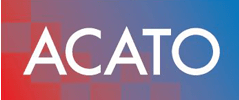
Navigating ISO 27001 Risk Assessment: A Step-by-Step Guide
Implementing ISO 27001 can be challenging, especially when facing the complexities of risk assessment. This guide provides a clear path through the ISO 27001 risk assessment process, outlining essential steps and useful tools. Readers will discover practical strategies for compliance and insights from real-world case studies, making it easier to navigate risk management. By addressing common obstacles in the certification journey, this content equips IT directors and business leaders with the knowledge to achieve ISO 27001 certification successfully. Engage with this guide to enhance your organization’s information security framework effectively.
Essential Key Takeaways from the ISO 27001 Risk Assessment Process
- Risk assessment is essential for protecting information assets within the ISO 27001 framework
- Identifying and prioritizing risks helps organizations mitigate potential vulnerabilities effectively
- Continuous monitoring ensures ongoing compliance and adapts to emerging threats in information security
- Utilizing risk management templates streamlines documentation and enhances organizational security efforts
- Engaging in regular training reinforces employee awareness and commitment to information security practices
Understanding the ISO 27001 Risk Assessment Process

Risk assessment within the ISO 27001 framework serves as a critical foundation for organizations aiming to safeguard their information assets. This process is essential for maintaining the integrity of systems and infrastructure while ensuring effective access control measures are in place. Insights into assessing risks associated with mobile devices and other vulnerabilities will be covered in more detail in the following sections.
Defining Risk Assessment within ISO 27001 Framework
Risk assessment within the ISO 27001 framework is a systematic process that identifies, evaluates, and prioritizes risks to information security. This evaluation informs necessary audits and gap analyses to ensure compliance with established standards, thereby facilitating effective risk management and mitigation strategies. By addressing threats such as phishing and ensuring alignment with contractual obligations, organizations can standardize their security practices and enhance their overall resilience against potential breaches.
Importance of Risk Assessment for Effective Management
Effective management hinges on thorough risk assessment, which serves as a fundamental component of an organization’s security strategy. By documenting the evaluation of potential threats and vulnerabilities, including considerations of physical security and compliance with ISO 31000 standards, organizations can implement best practices tailored to their specific needs. This proactive approach not only strengthens security measures but also enhances the organization’s ability to respond swiftly to incidents, ensuring the protection of vital information assets.
Now that the nuances of the ISO 27001 risk assessment process are clear, it is time to take action. The steps in this method will guide you through effective risk management, ensuring your information remains secure.
Steps involved in the ISO 27001 Risk Assessment Process

The ISO 27001 risk assessment process involves several essential steps that help organizations effectively manage their information security. Initial selection of a suitable risk management methodology establishes a framework for identifying potential risks that may threaten assets. Analyzing risks based on their impact and likelihood enables the creation of a risk matrix, guiding stakeholders in prioritizing these risks against the defined risk appetite. Developing a comprehensive risk treatment plan, coupled with an extensive risk report, ensures thorough documentation and knowledge sharing. Finally, continuous review and monitoring of risks guarantee ongoing compliance and security within the organization. ISO 27001 risk assessment process is a critical aspect of managing information security risks and ensuring that the strategies for risk assessment are comprehensive and up-to-date. This ensures not only the safeguarding of digital assets but also the resilience of the organization against cyber threats.
Selecting a Risk Management Methodology
Choosing an appropriate risk management methodology is foundational in establishing a robust ISO 27001 framework. Organizations must consider factors such as the potential for a data breach, compliance with the Payment Card Industry Data Security Standard, and the protection of intellectual property. Selecting a methodology that aligns with an organization‘s specific needs can enhance overall information security management, allowing for a structured approach to data security that minimizes vulnerabilities and ensures effective riskmitigation. Cyber security expertise is indispensable in this process.
Identifying Potential Risks
Identifying potential risks is a critical step in the ISO 27001 risk assessment process, allowing organizations to understand the vulnerabilities their information assets may face. Companies must employ a systematic methodology that includes an assessment of incident management practices and robust asset management strategies to uncover risks. By prioritizing this step, organizations can develop effective plans to mitigate potential threats, ensuring the protection of valuable information resources.
| Step | Description |
|---|---|
| 1. Risk Identification | Assess potential risks to assets, focusing on vulnerabilities and security weaknesses. |
| 2. Incident Management Evaluation | Review current incident management protocols to identify gaps and areas for improvement. |
| 3. Asset Management Review | Evaluate systems and information assets to determine what is at stake and ranking their criticality. |
| 4. Methodology Selection | Choose an appropriate approach for assessing risk that aligns with organizational needs and compliance requirements. |
Analyzing Risks for Impact and Likelihood
Analyzing risks for impact and likelihood is a pivotal part of the ISO 27001 risk assessment process. Organizations must evaluate potential risks to servers and identify how these risks can affect critical operations. By incorporating automation into the analysis, teams can efficiently assess vulnerabilities and prioritize mitigation strategies that safeguard essential data, including backup procedures that prevent data loss.
- Identify and assess risks to information assets.
- Evaluate the impact of identified risks on operations.
- Determine the likelihood of each risk materializing.
- Utilize automation for efficient risk analysis.
- Develop mitigation strategies based on findings.
Prioritizing Risks Based on Assessment Outcomes
Prioritizing risks based on assessment outcomes is a crucial step in the ISO 27001 risk management process. It enables organizations to allocate resources effectively, addressing the most critical vulnerabilities first. By evaluating threats in the context of cloud computing, outsourcing, and compliance with the General Data Protection Regulation (GDPR), companies can create a structured inventory of risks that directly impact their operations, ensuring comprehensive protection of sensitive data.
| Step | Description |
|---|---|
| 1. Identify Risks | Assess and document potential risks related to information assets and services. |
| 2. Analyze Risks | Examine each risk for potential impact and likelihood of occurrence. |
| 3. Prioritize Risks | Rank risks according to their significance to the organization, factoring in compliance and operational implications. |
| 4. Allocate Resources | Direct efforts and resources towards addressing the most pressing risks identified during assessments. |
Developing a Risk Treatment Plan
Developing a risk treatment plan is a vital step within the ISO 27001 risk assessment process, ensuring that identified risks are managed effectively. This plan should include strategies for addressing vulnerabilities and mitigating potential threats to organizational assets, including sensitive information protected under the Health Insurance Portability and Accountability Act. Incorporating governance principles into the plan enhances compliance and aligns with internal audit protocols, safeguarding the property and information systems essential for operational integrity.
Creating a Comprehensive Risk Report
Creating a comprehensive risk report is essential for organizations adhering to ISO 27001 standards. This report should detail the identified risks, their probability, and impact on human resources and overall organizational culture. By providing clear explanations of each risk and recommended mitigation strategies, the report serves as a vital tool for maintaining certification and fostering a proactive security environment.
| Step | Description |
|---|---|
| 1. Document Risks | List all identified risks along with their potential impacts on the organization. |
| 2. Assess Probability | Evaluate the likelihood of each risk occurring based on historical data and expert judgment. |
| 3. Outline Mitigation Strategies | Provide actionable measures to reduce the impact of identified risks. |
| 4. Review and Update | Regularly revisit the report to ensure it reflects current threats and organizational changes. |
Continuous Review and Monitoring of Risks
Continuous review and monitoring of risks is crucial in the iso 27001 certificationprocess, as it ensures that organizations remain vigilant against emerging threats like ransomware while upholding data confidentiality. By integrating frameworks such as COBIT, organizations can develop a comprehensive strategy for ongoing risk evaluation, enabling timely adjustments to security measures that meet evolving compliance requirements. This proactive approach not only helps mitigate potential vulnerabilities but also fosters a culture of resilience that protects essential information assets.
With the steps of the ISO 27001 risk assessment laid bare, it becomes clear that execution requires the right tools. The next section reveals practical templates that can simplify the process, making it more effective.
Practical Tools and Templates for ISO 27001 Risk Assessment

Utilizing risk assessment templates helps organizations efficiently document and manage their risk management framework while navigating the complexities of information security. In addition, software solutions streamline the risk management landscape, making it easier to monitor residual risk and enforce security policies effectively. This section will explore these practical tools, enhancing organizations’ capacity to maintain compliance with ISO 27001 standards.
Utilizing Risk Assessment Templates
Utilizing risk assessment templates can significantly streamline the ISO 27001 risk management process, ensuring that organizations systematically document potential threats while defining the scope of their information security efforts. These templates assist in establishing a clear framework for evaluating risks related to both internal systems and the broader supply chain, ultimately enhancing the overall security posture. By providing a comprehensive way to track risks and their impacts on customers, these tools enable organizations to take proactive measures that safeguard vital data and comply with standardized protocols.
| Step | Description |
|---|---|
| 1. Define Scope | Establish the boundaries of the risk assessment, detailing which systems and processes are included. |
| 2. Risk Documentation | Utilize templates to systematically record identified risks and associated impacts on information security. |
| 3. Impact Evaluation | Assess how risks may affect customers and operations within the supply chain framework. |
| 4. Review Process | Regularly update templates to reflect new threats and maintain alignment with compliance standards. |
Software Solutions for Streamlined Risk Management
Software solutions designed for streamlined risk management play a pivotal role in enhancing the efficiency of ISO 27001 risk assessments. These applications not only facilitate effective communication among stakeholders but also ensure clear ownership of tasks related to identifying and mitigating risks. With advanced features that support regulatory compliance and application security, these tools empower organizations to manage risks systematically, enabling swift responses to vulnerabilities and enhancing overall information security practices.
With tools in hand, the next challenge awaits: compliance. Understanding the essentials of ISO 27001 certification will solidify your foundation and open doors to new opportunities.
ISO 27001 Compliance and Certification Essentials

Key requirements for ISO 27001 compliance include understanding the information security management system (ISMS) framework and adhering to specified standards. Preparing for an ISO 27001 audit involves implementing effective measures and documentation practices that demonstrate compliance. These topics will provide organizations with practical insights into the necessary steps for achieving certification and ensuring ongoing adherence to best practices in information security.
Key Requirements for ISO 27001 Compliance
Key requirements for
include the establishment of an information security management system (ISMS) that aligns with the organization‘s strategic objectives. Organizations must conduct a thorough risk assessment to identify vulnerabilities and implement appropriate controls tailored to their specific needs. Demonstrating continuous improvement through regular audits and a commitment to compliance not only safeguards sensitive information but also enhances trust with clients and partners.
Preparing for an ISO 27001 Audit
Preparing for an ISO 27001 audit requires organizations to establish a thorough understanding of their information security management system (ISMS) and the associated documentation. This preparation involves conducting internal assessments to identify gaps in compliance and ensuring that all security controls align with the organization’s objectives. By meticulously documenting processes, controls, and risk assessments, firms can demonstrate their commitment to information security, ultimately fostering trust with clients and partners.
Understanding ISO 27001 provides a solid foundation. Next, real-world examples will show how organizations manage risks effectively, revealing the practical value of this standard.
Case Studies Illustrating Effective ISO 27001 Risk Management

This section presents real-world applications of ISO 27001 risk assessment, providing concrete examples of how organizations have successfully implemented these strategies. The case studies will offer valuable insights into the lessons learned from various ISO 27001 implementations, highlighting practical approaches that enhance information security management. These narratives will demonstrate the effectiveness of tailored risk assessment processes in achieving compliance and improving overall resilience.
Real-World Applications of ISO 27001 Risk Assessment
Organizations across various industries have successfully implemented ISO 27001 risk assessment practices to enhance their information security frameworks. For example, a financial institution adopted a comprehensive risk assessment process to identify vulnerabilities within its IT infrastructure, resulting in improved data protection and compliance with regulatory requirements. Similarly, a healthcare provider used ISO 27001 principles to systematically evaluate risks associated with patient data, ultimately fostering trust among stakeholders and reinforcing its commitment to safeguarding sensitive information.
Lessons Learned From ISO 27001 Implementations
Organizations that have implemented ISO 27001 often report several key lessons that enhance their approach to risk management. A common insight is the necessity of ongoing training and awareness programs, ensuring that all employees understand their role in information security. Furthermore, establishing a culture of continuous improvement allows organizations to adapt quickly to emerging threats and refine their security measures over time, reinforcing resilience against potential breaches. ISO 27001 awareness training is crucial in this regard.
As organizations navigate the currents of change, ISO 27001 remains a steadfast anchor. The landscape of risk assessment is evolving, revealing new trends that will shape the future of cybersecurity.
The Future of ISO 27001 and Risk Assessment Trends

Emerging trends in information security management are shaping the future of ISO 27001, as organizations adapt to a rapidly changing threat landscape. Preparing for changes in international standards ensures alignment with best practices and regulatory requirements, allowing businesses to maintain compliance and effectively manage risks. This section will highlight these trends and the necessary preparations for forthcoming standards, providing actionable insights for organizations striving for robust ISO 27001 preparations management.
Emerging Trends in Information Security Management
Emerging trends in information security management are increasingly shaping the landscape for organizations seeking ISO 27001 certification. As cyber threats evolve, businesses are adopting advanced technologies such as artificial intelligence and machine learning to bolster their risk assessment processes. These innovations enable organizations to analyze vast amounts of data, identifying potential vulnerabilities faster and more accurately, thereby enhancing their overall security posture.
| Trend | Description |
|---|---|
| AI and Machine Learning | Utilizing advanced algorithms to detect and mitigate risks efficiently. |
| Cloud Security Enhancements | Implementing stronger security measures for data stored in the cloud. |
| Zero Trust Architecture | Adopting a security model that requires strict identity verification. |
| Data Privacy Regulation Compliance | Aligning with evolving regulations like GDPR to protect customer data. |
Preparing for Changes in International Standards
Organizations must stay vigilant and proactive in preparing for changes in international standards related to ISO 27001. By regularly monitoring updates from standard-setting bodies and engaging in continuous learning, businesses can ensure alignment with evolving regulations, which ultimately enhances their information security posture. Training staff on new compliance requirements, revising internal policies, and adapting risk management practices are essential steps that foster a robust framework for managing information security risks. For those interested in advancing their knowledge and skills in this area, exploring information security programs can be beneficial.
| Step | Description |
|---|---|
| 1. Monitor Updates | Regularly check for changes in international standards to stay compliant. |
| 2. Engage in Training | Train employees on new compliance requirements to enhance knowledge. |
| 3. Revise Policies | Update internal policies to reflect any changes in standards. |
| 4. Adapt Practices | Adjust risk management practices to align with new regulations. |
Conclusion
Navigating the ISO 27001 risk assessment process is essential for organizations committed to protecting their information assets. By systematically identifying, evaluating, and prioritizing risks, teams can implement effective strategies that strengthen their overall security posture. The use of tailored methodologies and ongoing monitoring not only ensures compliance but also fosters resilience against emerging threats. Embracing these best practices empowers organizations to safeguard critical data and maintain trust with clients and stakeholders.
